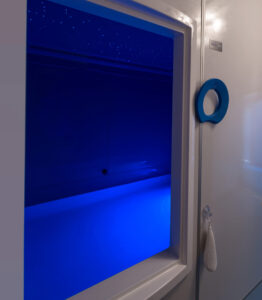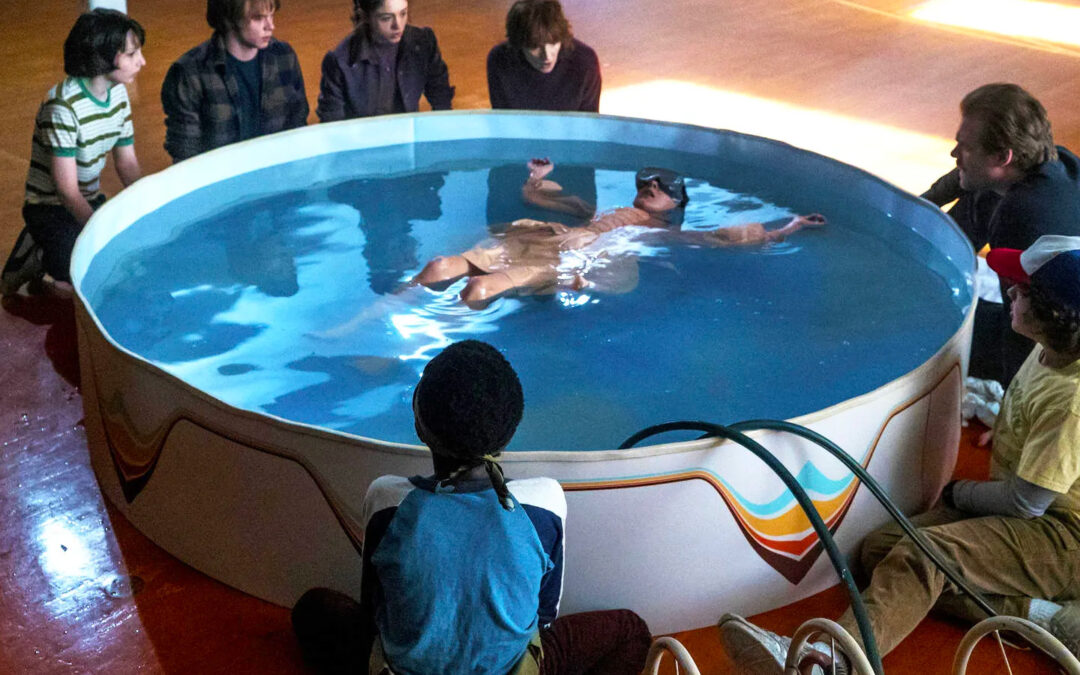In popular media, float tanks are frequently depicted as settings for psychedelic-inspired journeys—a modern-day vision quest where characters often confront internal or sometimes literal demons. These encounters often lead to breakthrough moments that facilitate personal growth and progress on their life journeys.
However, the actual benefits of floating typically manifest in more subtle ways. Float tanks aren’t quick-fix epiphany machines, and while visual experiences during floating are not unheard of, they are far from the surreal DMT trips often portrayed in television and movies. Floating, as a practice, offers a plethora of benefits, including reduced stress and anxiety, alleviated muscle and joint pain, enhanced immune system function, heightened creativity, and various other advantages that have been previously discussed. These benefits are realized and maintained through regular floating.
In this exploration, we’ll navigate the often murky waters of how float tanks are sensationalized in popular media and compare these dramatized depictions to the very real, albeit less flashy, benefits and experiences associated with floating.
Float Tanks in Cobra Kai

Cobra Kai – the Netflix series continuing the story of the original Karate Kid movie from the 80s – features an episode where one of the main characters, Sam, joins her friends for a trip to try out float tanks.
Sam has a realistic hallucination in which she’s shown in a mind-scape with a black background, confronted by the demands of all the people in her life. This is followed by a literal fight with her aggressive, “shadow self.” A fight which, in this case, she loses.
Side Notes:
- Sam’s “hippy” friend also had a realistic vision as well, but in it she was a drop of dew… which is closer to the types of experiences people actually report from time in the tank.
- Her other friend couldn’t float, because the heaters in the tank were broken – classic.
Float Tanks in Stranger Things

Stranger Things has a way of making everything look ten times more mysterious, and the humble float tank is no exception. In the series, Eleven uses a makeshift float tank to heighten her psychic abilities, diving deep into an alternate realm in her quest to confront various threats.
In most of these clips she transports to a realistic mental realm, again presented on a totally black background, with characters (or entities) she is able to observe and interact with. In the more recent seasons, she used the float tank to work through very early trauma, which allows her to regain the use of her lost psychic abilities.
—
Side Notes:
- Of all of these, Stranger Things gets a break since these scenes are about Eleven’s experience floating, rather than what floating is like for a normal human being.
- Their explanation of how to construct a DIY float tank is not too far off from a workable setup… although they ignore the fact that all of the heat is sucked out of the water when you add in salt – an extreme endothermic reaction that takes hours of commercial level heating to get up to temperature. Eleven would be floating in absolutely frigid water.
- The floatation experience is shown in a couple ways: being totally submerged in water with a breathing apparatus, or laying face up in a pool of saturated epsom salt. These actually mirror the progression of float tanks, from being fully submerged tanks of water in 1950’s labs, to lay-down commercial units in the 1970’s.
Float Tanks in Big Bang Theory

In The Big Bang Theory, Amy and Sheldon both hop into float tanks, but they’re shown as having wildly contrasting experiences.
Amy’s float is, based on our previous examples, what you’d expect: she is conjured into a head-space where realistic versions of people in her life are all criticizing her, telling her that she’s a failure. And of course they’re shown as disembodied heads on an all black background.
Sheldon’s float is also psychedelic, with him swimming around inside of visuals of infinitely repeating fractals from Mandelbrot Sets. Although also hyperbolic for a typical float experience, this is actually much closer to common visuals that people report from time in the tank.
—
Side Notes:
- Float tanks are almost never in the same room together – each one would be a completely private setup.
- The description of the filtration process is shockingly accurate, other than clarifying that the water is circulated, disinfected, and filtered between every use, not dumped and fully replaced… which would be over $500 just in the cost of salt per float.
Float Tanks in Dave

Dave, the comedy series parodying the life of the real world rapper Lil’ Dicky as he was trying to make it big, also features a float tank scene at the end of the series.
Driven by almost sheer desperation, our aspiring rapper finds himself driven to a float tank to overcome writer’s block. In this episode, his psychedelic float hallucinations are heightened thanks to a little “help” from actual psychedelics, so we’ll also cut Dave a little slack on its representation of the pure float experience, but the pattern is familiar.
Dave finds himself engrossed in a realistic, but surreal vision (not set on a purely black background, for once). After exploring, he eventually discovers an alternate version of himself, shaved of all hair and mostly nude, who confronts him about art and creativity.
He has a traumatic end to the float, after which he has a complete creative breakthrough and literally runs to the studio, still soaking in salt-water, to start recording music.
—
Side Notes:
- The float tank is located outside, where it doesn’t appear to be connected to a power source… obviously not the ideal situation for a good float.
- Floaters aren’t directly supervised during their floats, but customers are also not typically served psychedelic tea beforehand, so… yeah, the two dudes at the end were clearly being irresponsible.
Float Tanks in Reality

Television thrives on dramatization, as it’s inherent in the medium to amplify emotional and sensory experiences. Interestingly, sensory deprivation provides a unique platform for this purpose. TV shows often depict characters confronting literal versions of themselves in spiritual duels, yet the reality of floating differs significantly. For most floaters, their true challenges are rooted in everyday stresses, anxieties, and physical discomfort. However, the emphasis on dramatic confrontations obscures the more understated and consistently beneficial aspects of floating.
The advantages of floating, such as accelerated injury recovery, enhanced mental clarity, and the quieting of inner critics, emerge gradually over consistent float sessions. While some individuals do report vivid mental imagery or experiences resembling hallucinations, these are typically more subdued than the dramatic narratives portrayed in media. Achieving serenity doesn’t necessitate battling a team of internal naysayers. In fact, the majority of people find the float tank to be a liberating space—a blank canvas where the mind can unwind—rather than a chamber that amplifies neuroses.
Moreover, the benefits of float tanks extend far beyond the immediate experience, in contrast to their portrayal in short-form mass media. When examining stress and anxiety reduction, which are among the most researched benefits of floatation therapy, it becomes evident that these benefits have a compounding positive impact on various aspects of physical and mental well-being. The real-world benefits are enduring and often life-enhancing, although they may lack the flashy drama depicted in popular media.
So, the next time you encounter a float tank on the silver screen, approach it with a grain of epsom salt. While it may not deliver the cathartic battles or trippy escapades that TV often presents, it more than compensates with genuine, lasting benefits. As is often the case, the reality of floating surpasses fiction in many ways.



Recent Comments